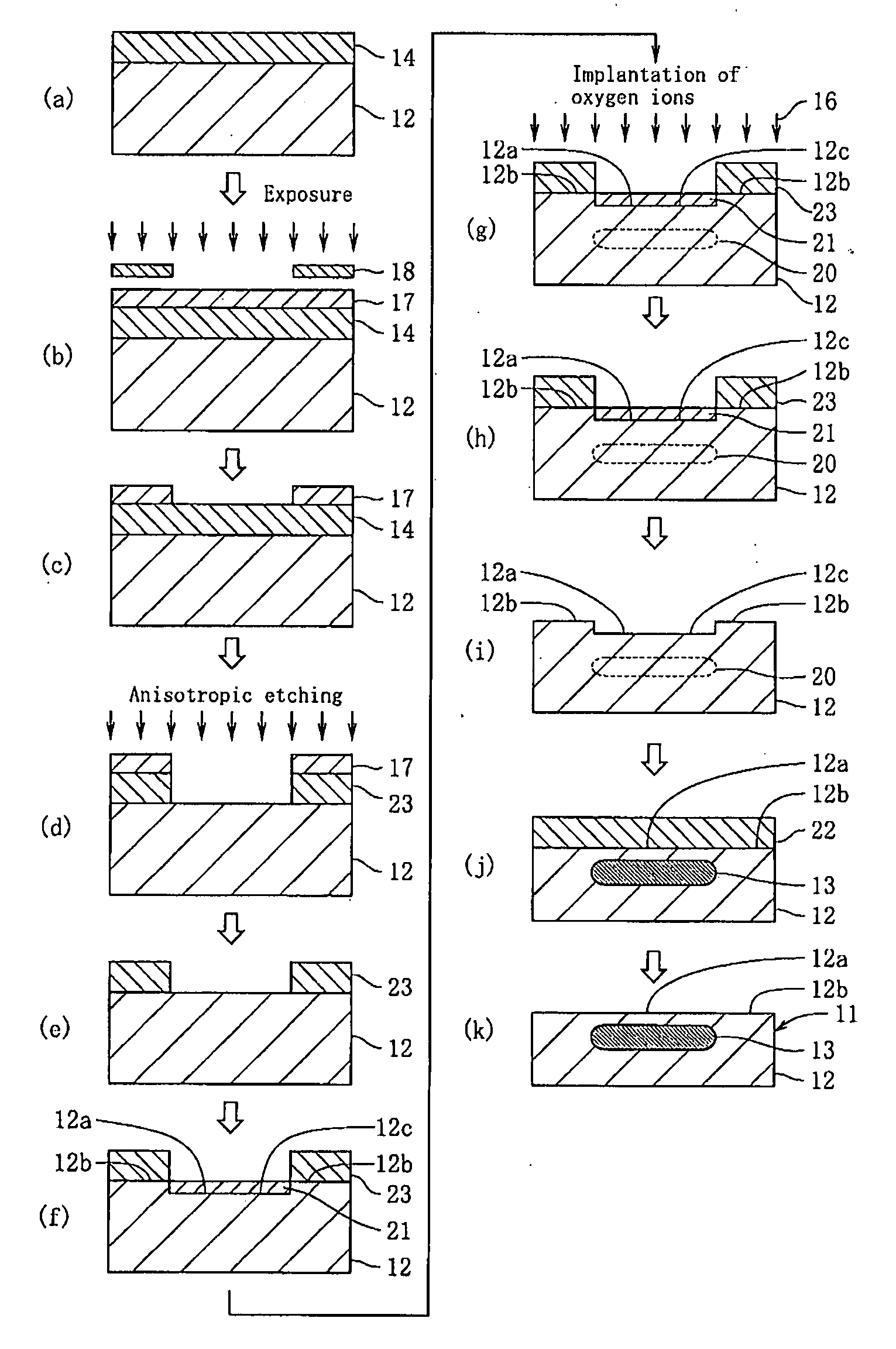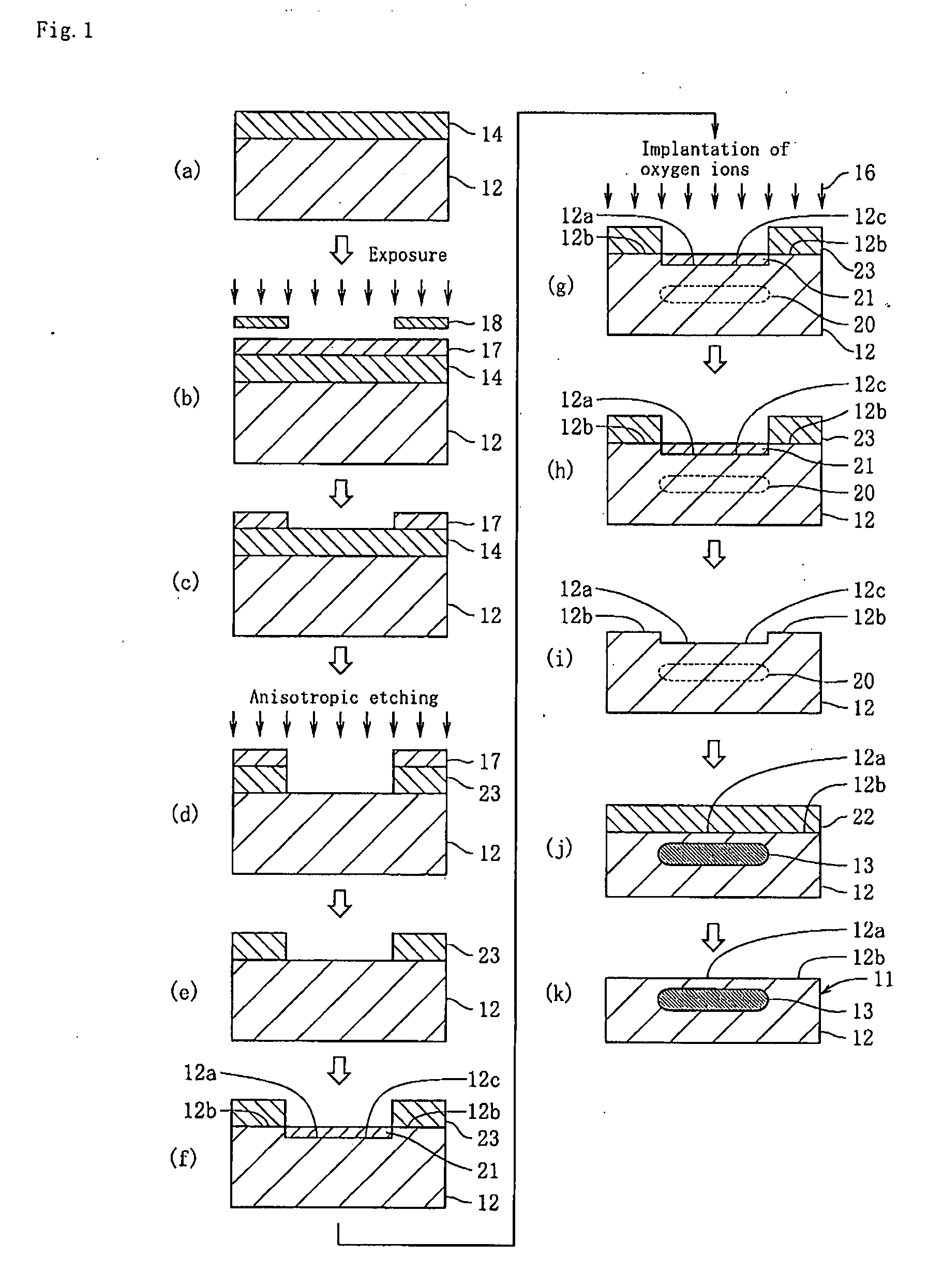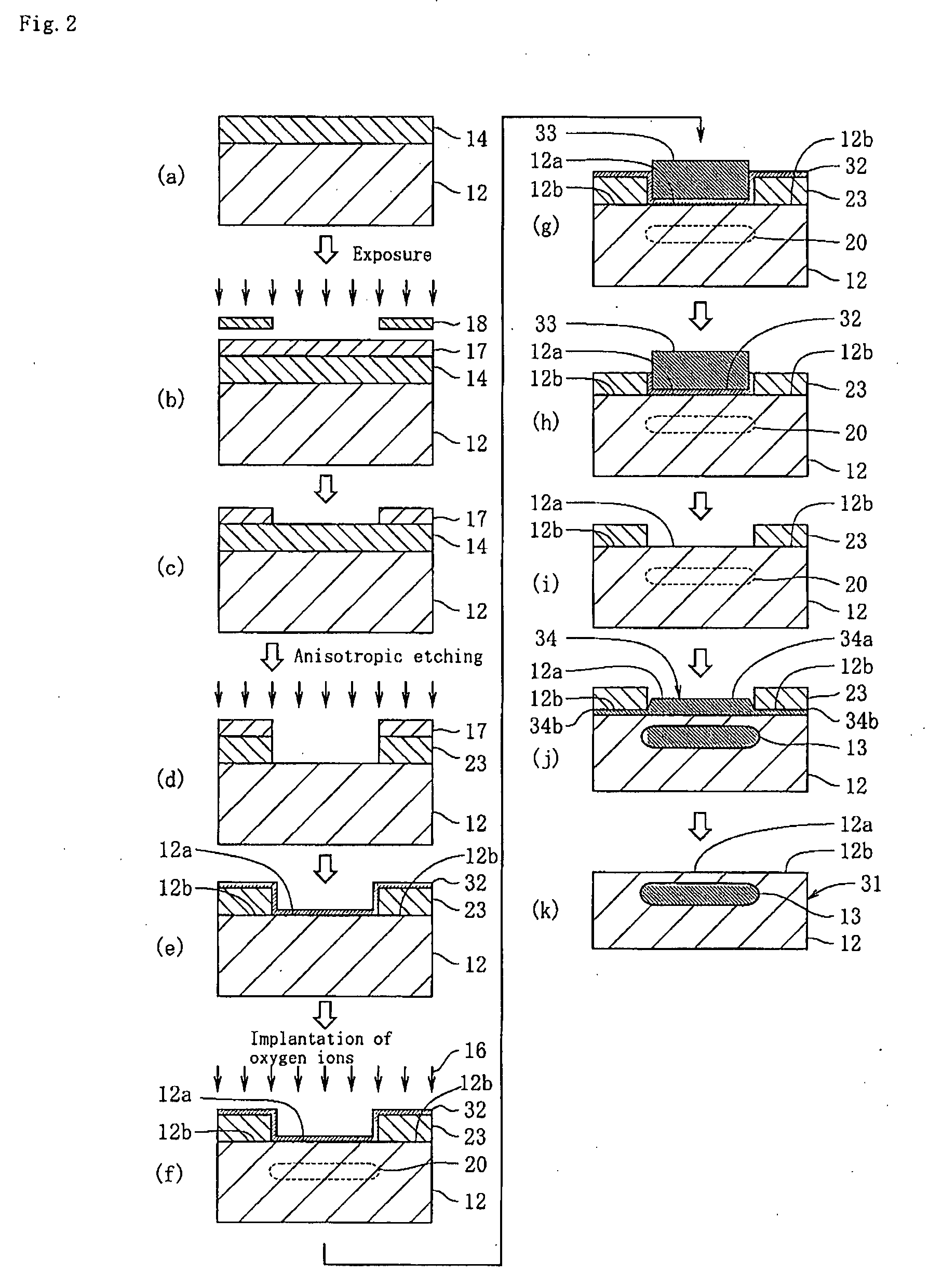Method for manufacturing soi substrate
- Summary
- Abstract
- Description
- Claims
- Application Information
AI Technical Summary
Benefits of technology
Problems solved by technology
Method used
Image
Examples
first embodiment
[0062]As shown in FIG. 1(k), an SOI substrate 11 has a silicon substrate 12 and a buried oxide film 13 formed inside the substrate 12. The substrate 12 is cut in a sliced form along a plane perpendicular to the axis of a single-crystal silicon rod grown by Czochralski (CZ) method [plane (100) of a crystal structure of a single crystal silicon]. Moreover, a buried oxide film 13 is formed as described below. It is allowed to cut a substrate from a single-crystal silicon rod or single-crystal silicon plate grown not by the CZ method but by the floating zone (FZ) method or the like.
[0063]Firstly, a surface oxide film 14 is formed on the surface of the substrate 12 (FIG. 1(a)). This surface oxide film 14 is a silicon oxide film (SiO2 film), which is formed by thermally oxidizing the substrate 12 or with the CVD method (chemical vapor deposition method). Moreover, the surface oxide film 14 is formed in the thickness range between 200 and 1,000 nm, preferably in the thickness range between...
second embodiment
[0069]FIG. 2 shows second embodiment of the present invention. In FIG. 2, a nemeral same as that in FIG. 1 denotes the same component.
[0070]This embodiment further includes a step of forming a buffer film 32 on the substrate surface 12a serving as an SOI area where a mask oxide film 23 is not formed and on the upside and the side of a mask oxide film 23. Specifically, a buffer film 32 made of silicon nitride is formed on the substrate surface 12a serving as an SOI area and the upside and the side of the mask oxide film 23 after vertically anisotropically etching a surface oxide film 14 vertically to the surface of a substrate 12 by using a resist layer 17 as a mask (FIG. 2(d)) before implanting oxygen ions 16 (FIG. 2(f)). The thickness of the buffer film 32 ranges between 5 and 500 nm, preferably between 20 and 200 nm. This limitation of the thickness of the buffer film 32 in the range of 5 to 500 nm because it is impossible to prevent oxygen from entering from a boundary area at th...
third embodiment
[0075]FIG. 3 shows third embodiment of the present invention. In FIG. 3, a numeral same as that in FIG. 1 denotes the same component.
[0076]This embodiment further includes a step of etching a mask oxide film 23 to form a predetermined thickness and a step of forming a buffer film 42 on a predetermined-width boundary area contacting with the side of the mask oxide film 23 of silicon substrate surface 12a serving as an SOI area and on the side of the mask oxide film 23 between a step of implanting oxygen ions 16 and a step of performing annealing. Specifically, after implanting oxygen ions 16 (FIG. 3(e)), the mask oxide film 23 is decreased in thickness so that the difference between thicknesses of the oxide film 34a formed on the substrate surface 12a serving as an SOI area at the time of annealing to be described later and an oxide film 34b to be newly formed on the substrate surface 12b serving as a bulk area (thickness of the oxide film 34a minus thickness of the oxide film 34b) b...
PUM
 Login to View More
Login to View More Abstract
Description
Claims
Application Information
 Login to View More
Login to View More - R&D
- Intellectual Property
- Life Sciences
- Materials
- Tech Scout
- Unparalleled Data Quality
- Higher Quality Content
- 60% Fewer Hallucinations
Browse by: Latest US Patents, China's latest patents, Technical Efficacy Thesaurus, Application Domain, Technology Topic, Popular Technical Reports.
© 2025 PatSnap. All rights reserved.Legal|Privacy policy|Modern Slavery Act Transparency Statement|Sitemap|About US| Contact US: help@patsnap.com



